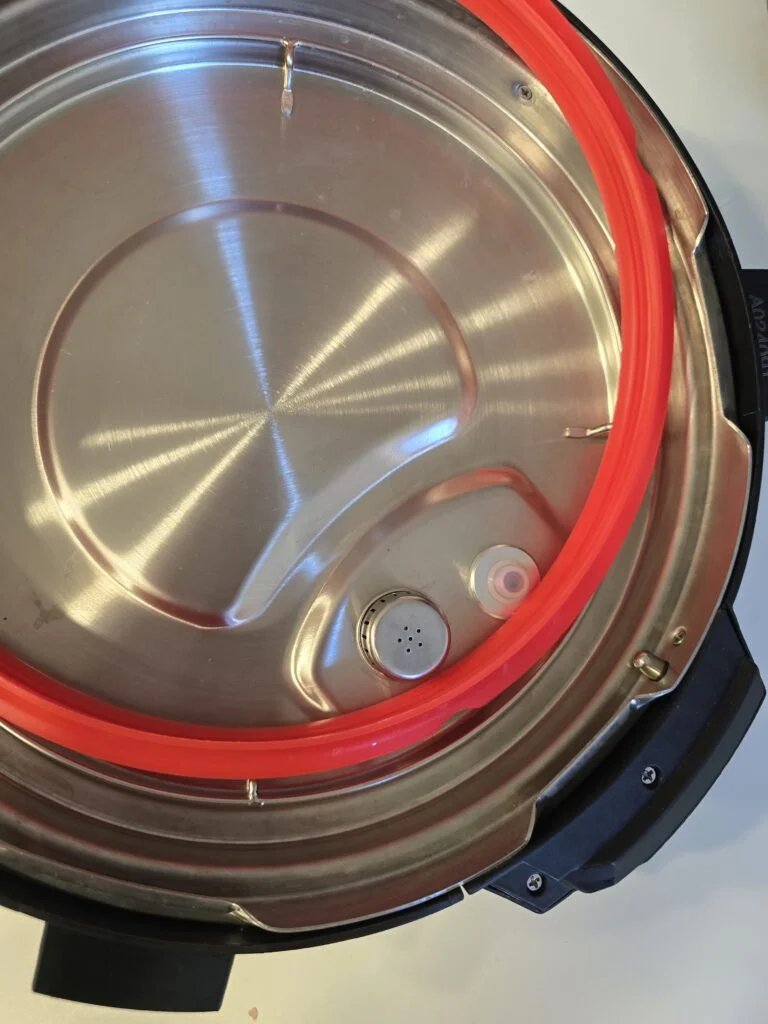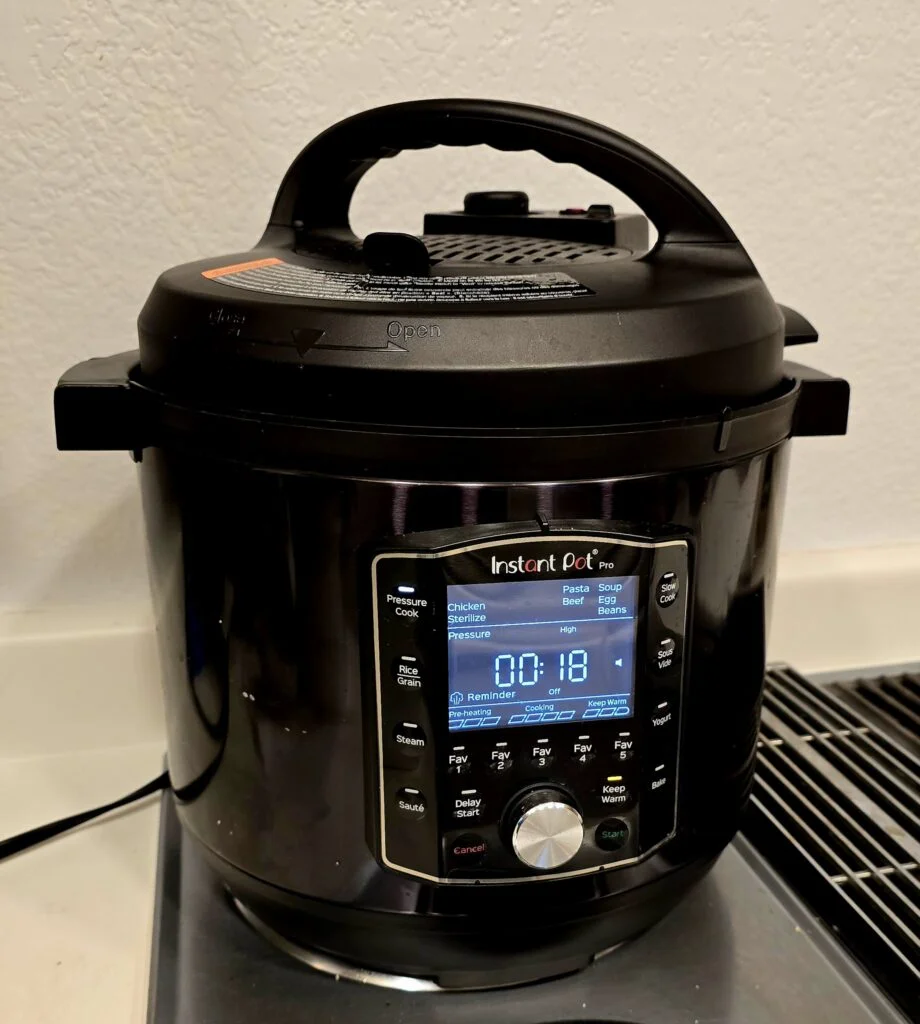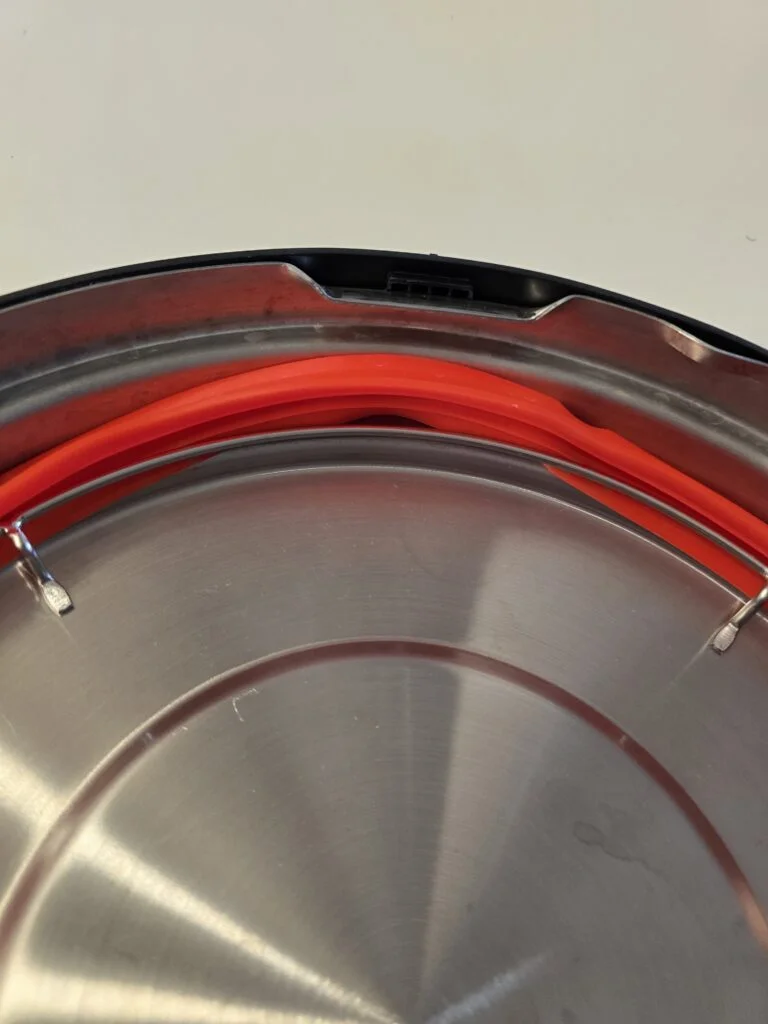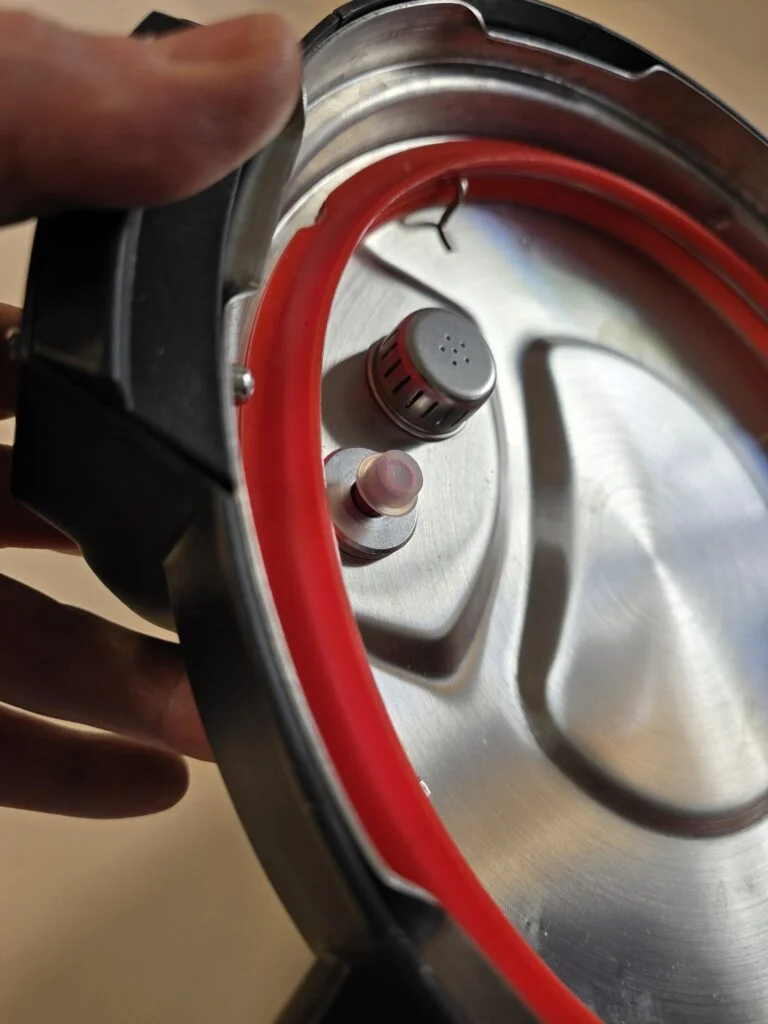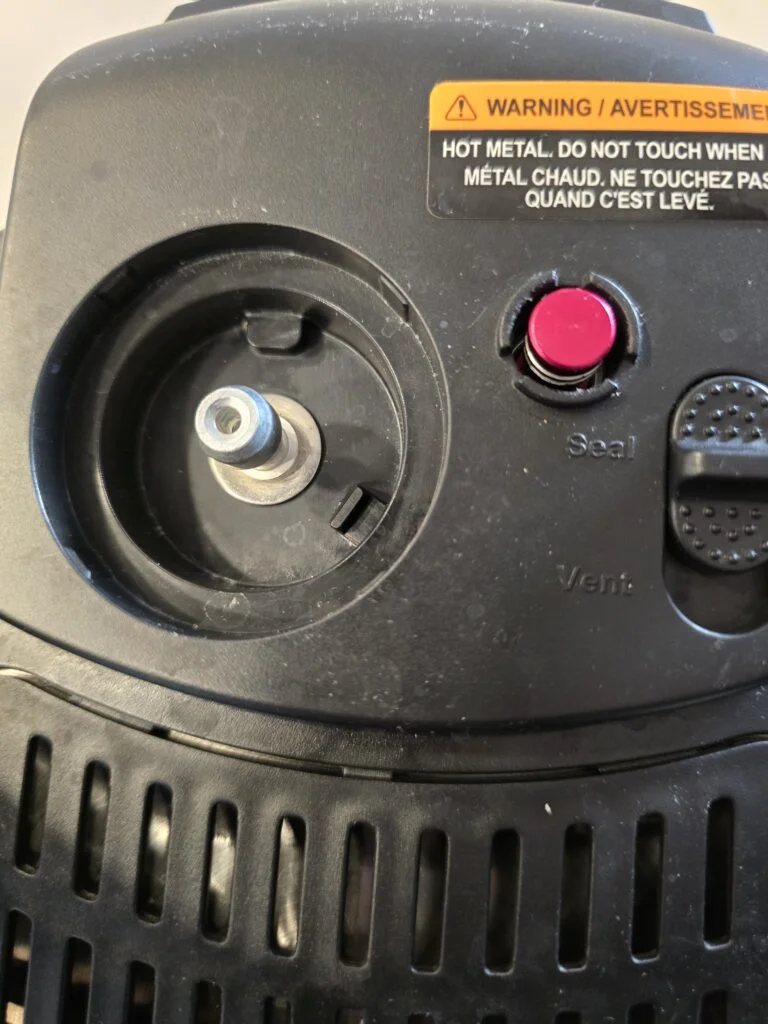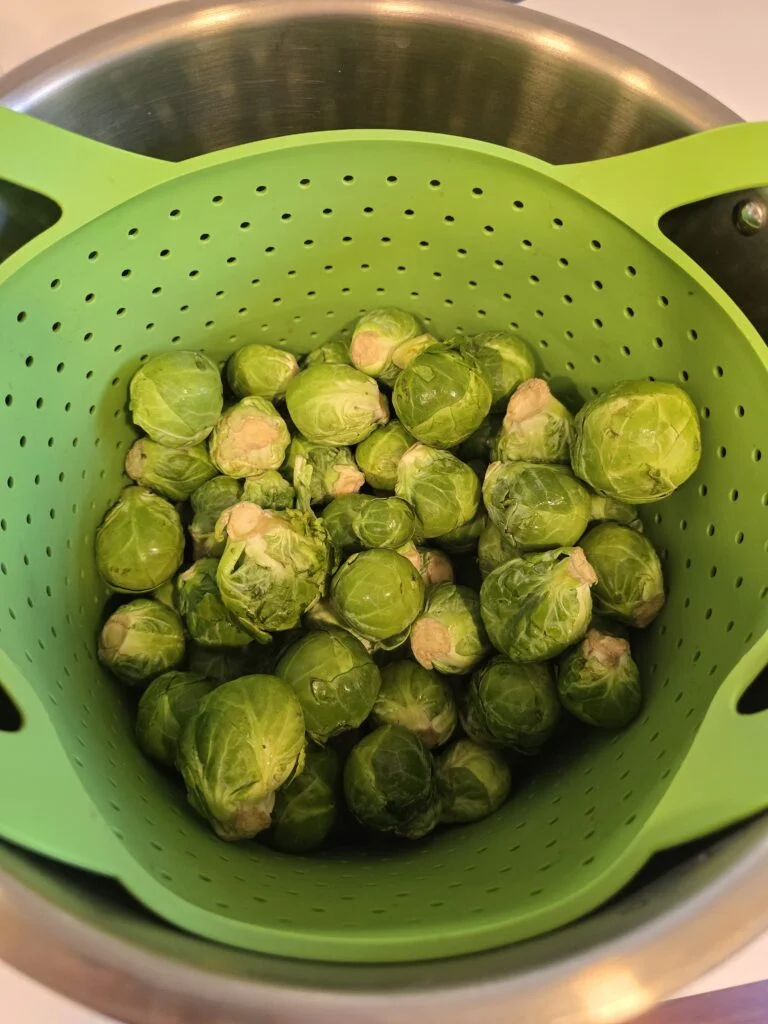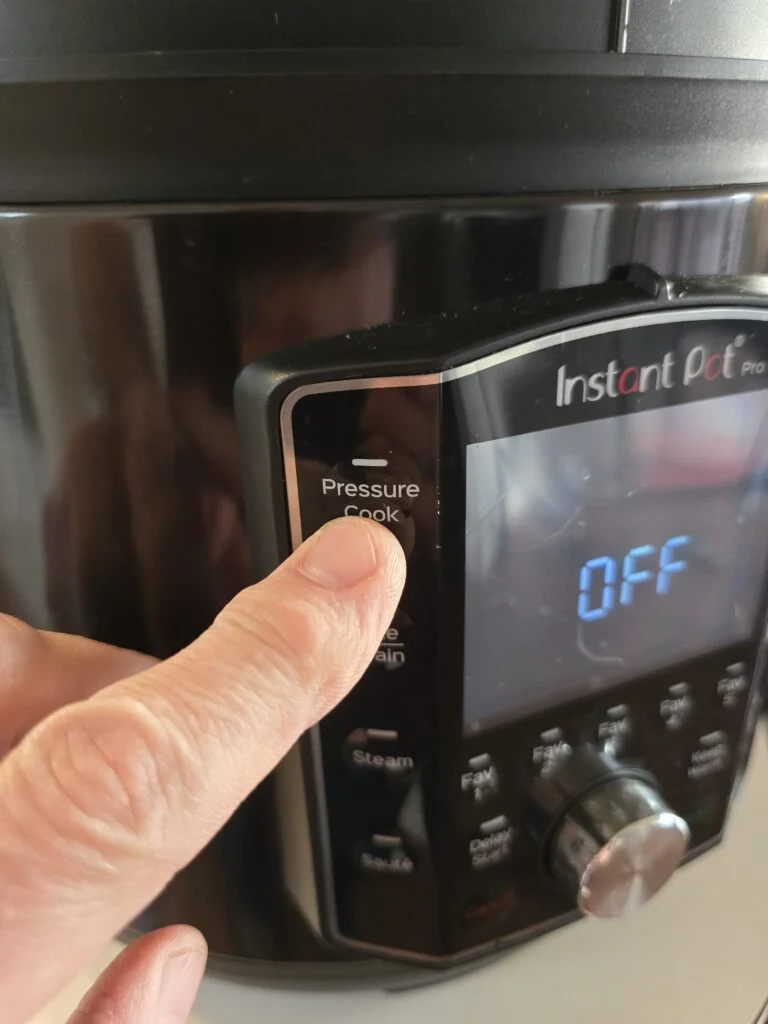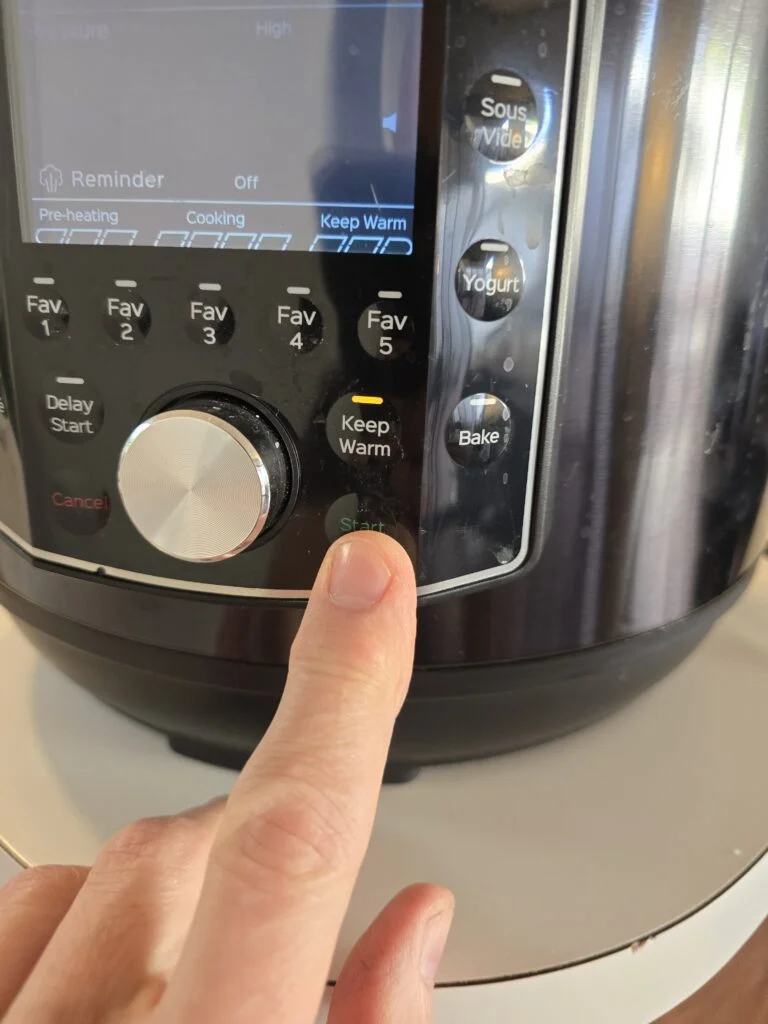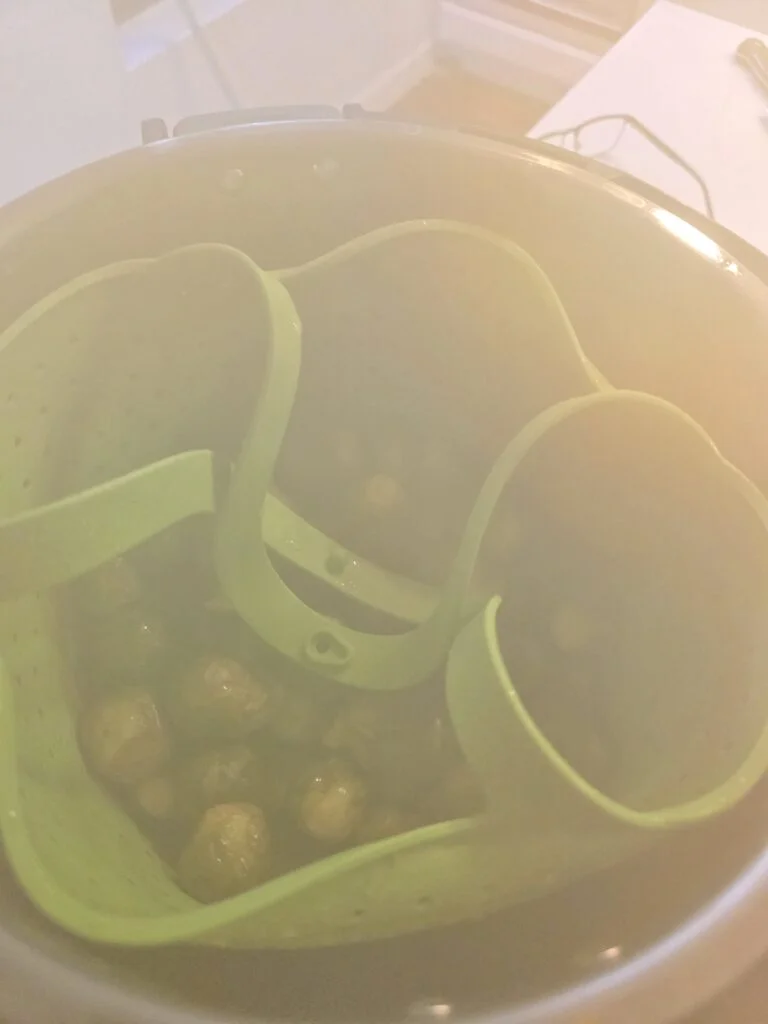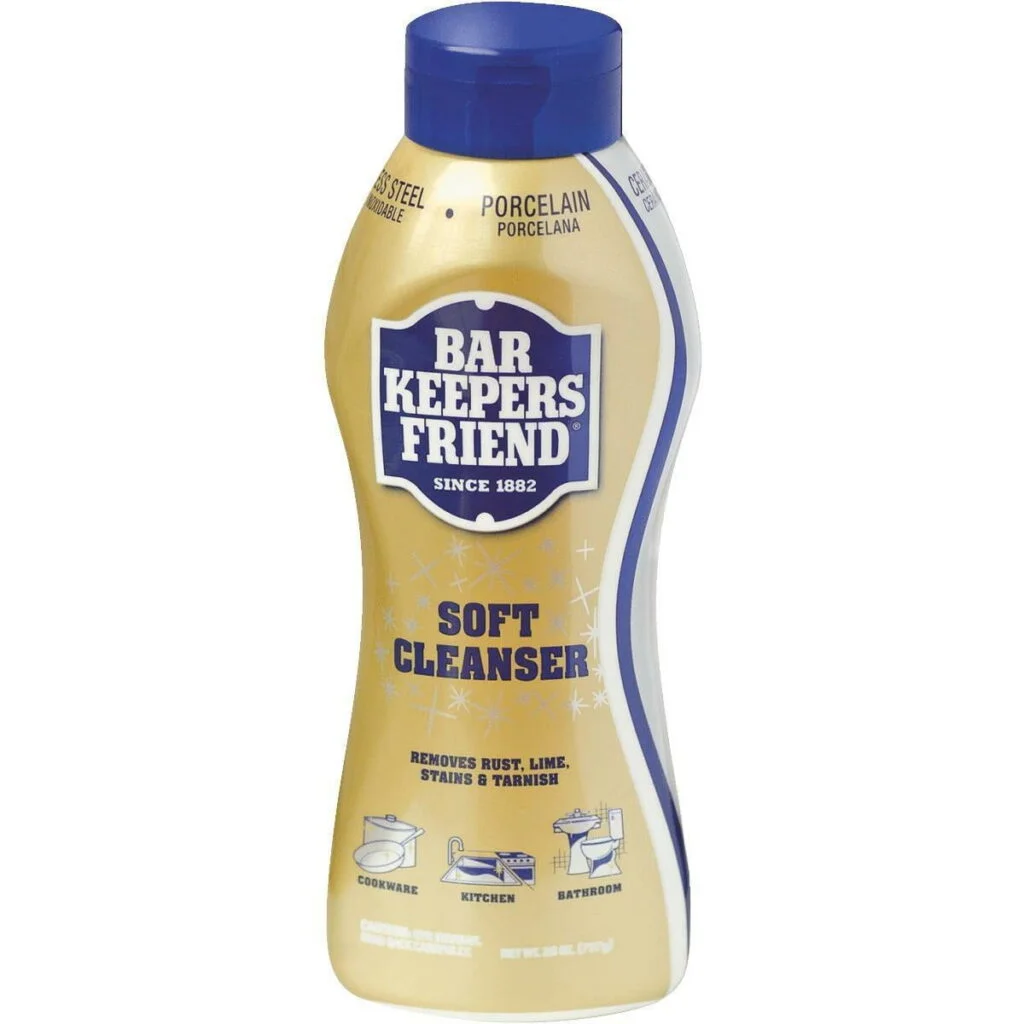All pressure cookers work the same way. They use pressurized steam at temperatures above the boiling point of water. They have a locking lid with a seal, as well as a pressure relief valve and a float valve. Cooking times vary depending on the type of cooker, the amount of food, and its size. You will have to experiment with your cooker to determine the exact cooking times. If you follow the instructions and your food is not cooked properly, don’t assume you did something wrong. For example, I’ve seen recipes that call for cooking broccoli for nine minutes, but I know my cooker will overcook it in three minutes. Once you have timed it correctly, the results will be consistent. Keep in mind, though, that recipes are just a starting point.
The lid has a replaceable silicone seal. The color is not important. For cleaning, remove the ring and correctly reinstall it before use. It fits behind a wire bead ring and slides in easily at first. The last part requires a good push to secure it properly. Be sure to check that it is seated properly all the way around, as it is easy to leave a small gap.

correct install
